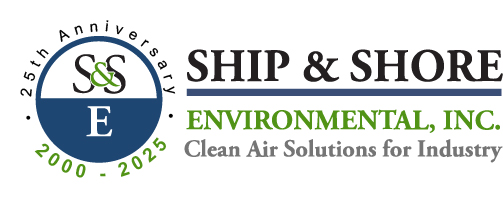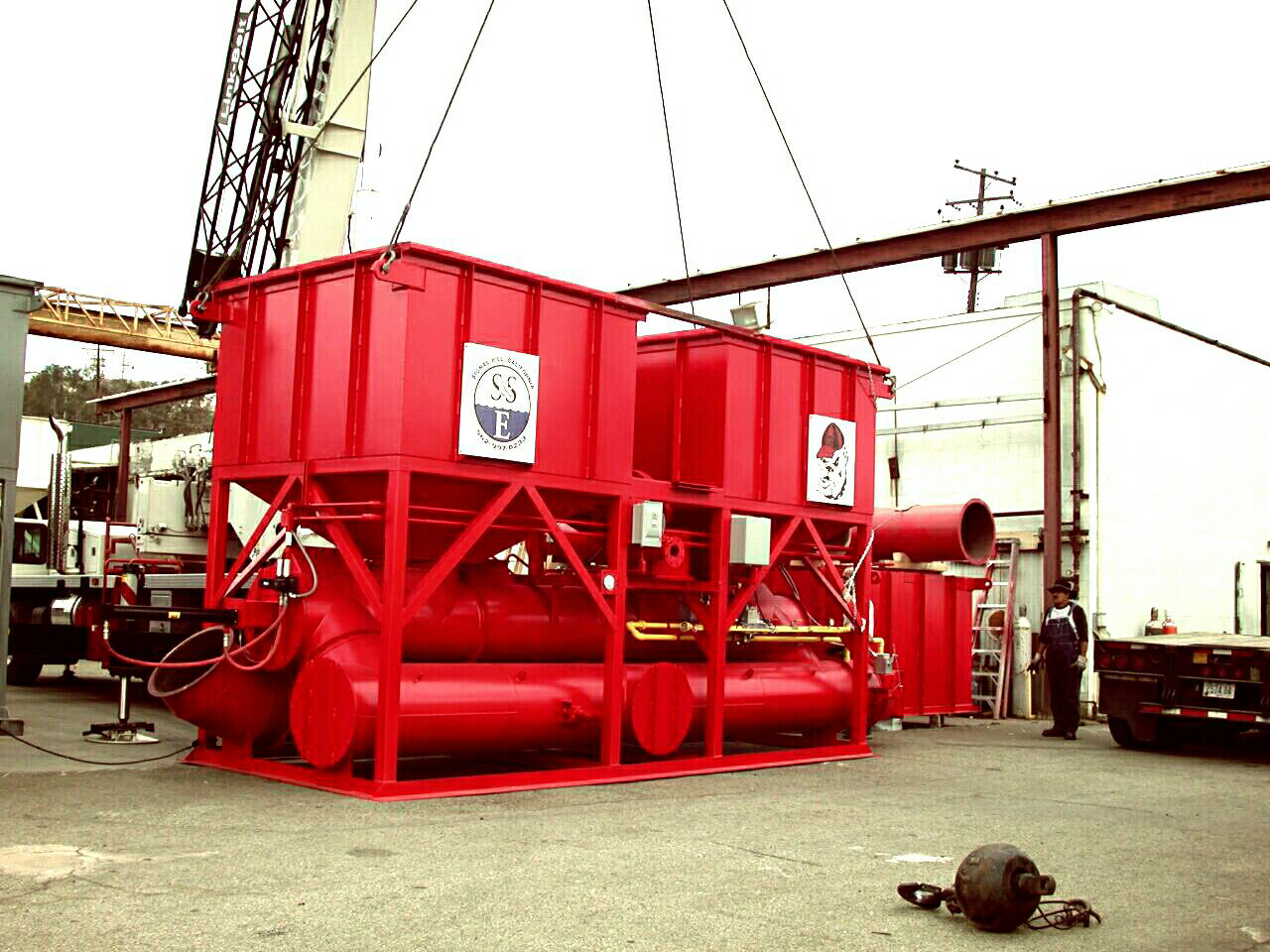The Future of Environmental Compliance:
July 31, 2025 5:03 pmThe Future of Environmental Compliance:
How Smart Technology is Revolutionizing Air Pollution Control and Regulatory Oversight
Environmental regulations have driven remarkable improvements in air and water quality over the past fifty years. Yet despite these gains, regulatory violations remain frustratingly common across industries—from maritime operations to industrial manufacturing facilities throughout California and beyond. Recent research reveals that the majority of major facilities with Clean Water Act permits report compliance failures, while millions of Americans still face exposure to unsafe drinking water and toxic emissions.
For companies operating air pollution control systems and emission control equipment, staying ahead of evolving compliance requirements has never been more critical—or more challenging.
The Traditional Environmental Enforcement Challenge
For decades, environmental compliance for air pollution control systems and industrial emission control has operated on a simple deterrence model: conduct inspections to catch violators and impose penalties steep enough to discourage future violations. This approach has achieved important victories, particularly in regions like Southern California where facilities in Signal Hill and surrounding areas face stringent air quality regulations, but it faces growing constraints.
Federal environmental inspections dropped by nearly half between 2007 and 2017—from 22,000 to just 12,000 annually. Budget pressures and political realities suggest this trend won’t reverse anytime soon. With traditional enforcement resources stretched thin, regulators are increasingly looking to technology and behavioral science for innovative solutions.
The Machine Learning Revolution in Air Quality Monitoring
Advanced data analytics are transforming how regulators and air pollution control system providers identify and address environmental risks. Just as search engines predict which advertisements you’ll find most relevant, machine learning algorithms can now predict which industrial facilities and emission control systems pose the highest risk of violations.
These systems analyze vast datasets—violation histories, facility characteristics, air quality monitoring data, emission patterns, and environmental conditions—to identify patterns human inspectors might miss. For companies like Ship and Shore Environmental serving the Signal Hill industrial corridor and broader California market, this technology offers unprecedented insights into system performance and compliance optimization.
Early applications have shown remarkable promise:
- Researchers demonstrated that machine learning could double violation detection rates without increasing inspection frequency
- Deep learning analysis of satellite imagery can identify 95% of pollution sources using just 10% of the resources required for manual detection
- Automated monitoring systems can continuously evaluate high-resolution satellite data to spot compliance problems in real-time
For maritime and industrial operations requiring sophisticated air pollution control systems, this technology offers particular advantages. Satellite monitoring can track vessel emissions, detect unauthorized discharges, and identify compliance issues across vast areas. In industrial settings like those found throughout Signal Hill and the Los Angeles Basin, continuous emission monitoring systems integrated with machine learning can provide real-time compliance verification and predictive maintenance alerts for pollution control equipment.
Smart Notifications and Risk Communication
Technology doesn’t just improve detection—it can also prevent violations before they occur. When facilities receive notifications that they’re flagged as “high risk,” compliance rates often improve significantly.
Studies show that businesses respond when they believe oversight has increased. Danish taxpayers who received letters indicating higher audit probabilities reported more income. Uruguayan companies increased tax payments after receiving communications about enhanced enforcement.
The key is credibility. Messages must be specific, timely, and backed by demonstrable enforcement capabilities. Generic warnings often go ignored, but targeted communications that reference specific risks or peer enforcement actions capture attention.
Lowering Compliance Costs Through Better Information
Many violations occur not from willful disregard but from confusion about requirements or inability to implement effective compliance systems. Data-driven approaches can address these knowledge gaps by translating complex regulations into actionable guidance.
Self-assessment tools have shown particular promise. When Colorado required small hazardous waste generators to complete compliance self-certifications, compliance rates jumped from 32% to 84% over three years. Similar checklists and digital compliance tools can help facilities systematically address regulatory requirements.
Technical assistance programs also benefit from data-driven targeting. Instead of offering generic guidance, regulators can use predictive models to identify facilities facing specific challenges and connect them with relevant resources or peer facilities that have successfully addressed similar issues.
The Power of Transparency
Public disclosure amplifies enforcement impact beyond traditional penalties. When Massachusetts required drinking water suppliers to notify customers about violations, violation rates dropped by one-third to one-half. Similarly, facilities listed on EPA “watch lists” showed 10-23% reductions in violation probability.
Modern data analytics can make disclosure more effective by:
- Identifying which information formats drive the strongest responses
- Targeting disclosure to audiences most likely to influence facility behavior
- Tracking disclosure impact to refine communication strategies
For maritime operations, automatic identification systems (AIS) data combined with environmental monitoring creates new transparency opportunities around vessel compliance and environmental performance.
Looking Ahead: Implementation Challenges and Opportunities
While these technological advances hold tremendous promise, successful implementation requires careful adaptation to specific regulatory contexts. Effective programs need:
Collaborative Development: Partnerships between regulators, technology developers, industry stakeholders, and environmental scientists ensure solutions address real-world needs.
Rigorous Testing: Pilot programs with proper evaluation help identify which approaches work best in different settings.
Cultural Change Management: Technology alone isn’t sufficient—organizations need to adapt processes, training, and incentive structures to leverage new capabilities effectively.
Balanced Approach: Smart technology should enhance rather than replace human judgment and relationship-based compliance assistance.
The Bottom Line for Air Pollution Control and Industrial Operations
For operators of air pollution control systems and industrial emission control equipment, these trends signal both challenges and opportunities. Enhanced detection capabilities mean violations are more likely to be caught, but they also open doors for proactive compliance management and optimized system performance.
Organizations that embrace data-driven compliance strategies—using analytics to identify risks in their pollution control systems, implementing systematic self-assessment processes, and engaging transparently with California Air Resources Board and local air quality management districts—position themselves ahead of the curve.
The future of environmental compliance isn’t about playing an endless game of regulatory hide-and-seek. Instead, it’s about leveraging technology and behavioral insights to create systems that prevent violations while supporting sustainable operations and optimal air quality outcomes.
Smart operators will view these developments not as threats but as tools for building more effective, efficient, and environmentally responsible businesses. Companies like Ship and Shore Environmental in Signal Hill are already helping clients integrate these advanced compliance technologies with proven air pollution control solutions.
Ready to optimize your environmental compliance strategy? Ship and Shore Environmental, Inc. combines cutting-edge air pollution control systems with smart compliance technology to help Signal Hill area businesses and industrial operations nationwide stay ahead of evolving regulations.
Contact Ship and Shore Environmental today to discover how our proven emission control solutions and compliance expertise can benefit your operations. Call us or visit our Signal Hill facility to learn about our comprehensive air quality management systems.
Categorised in: 25Years of S&SE, Ship & Shore

